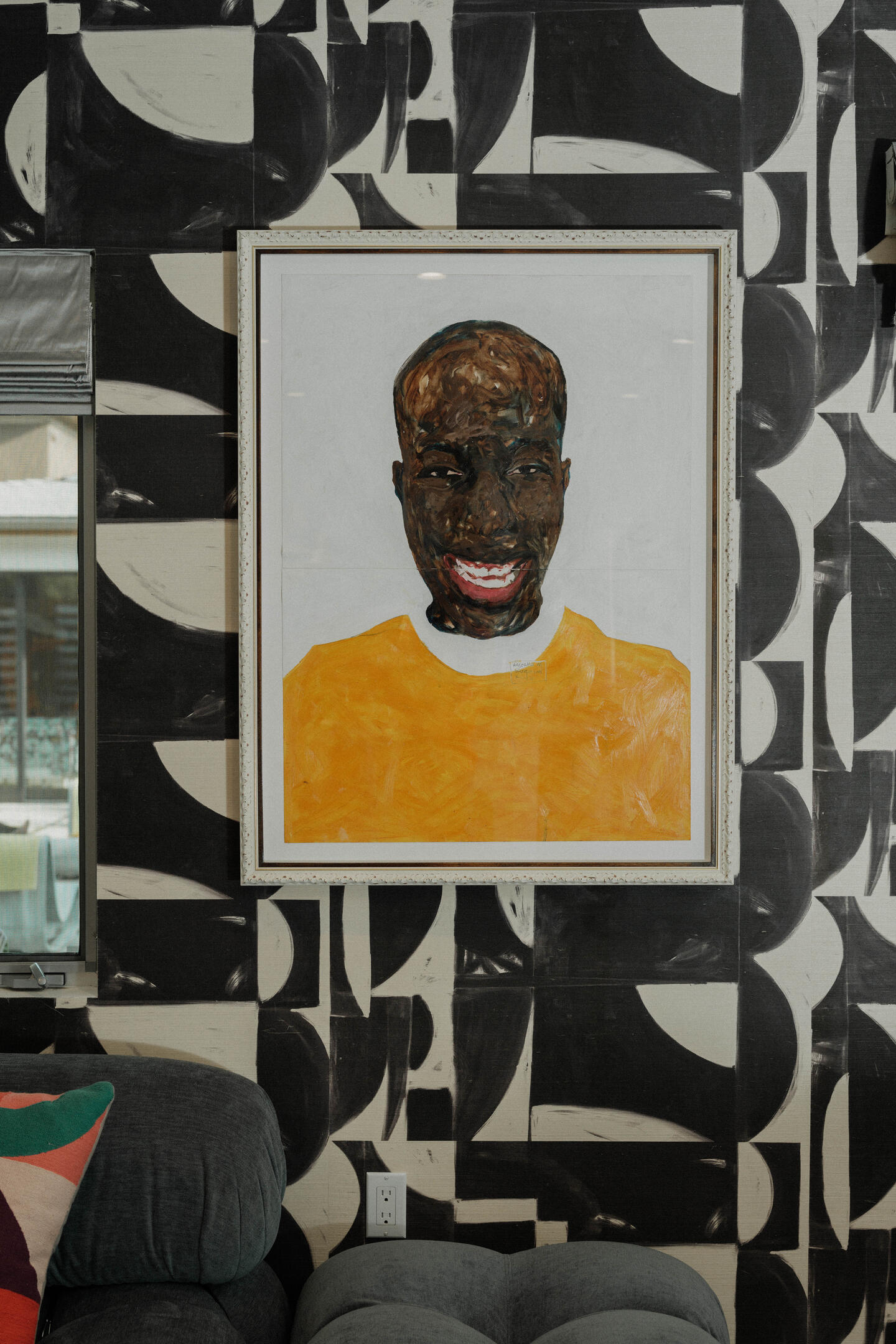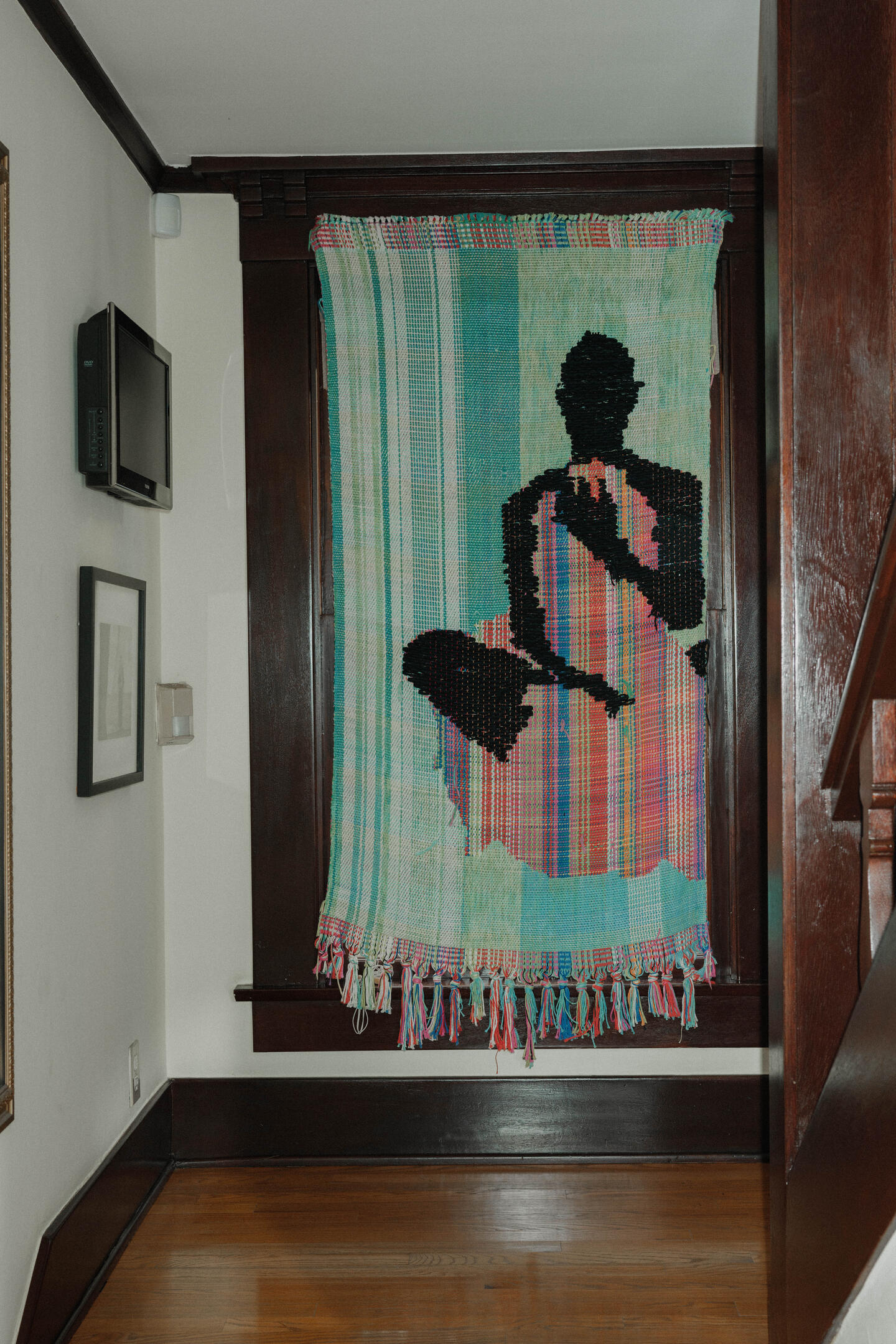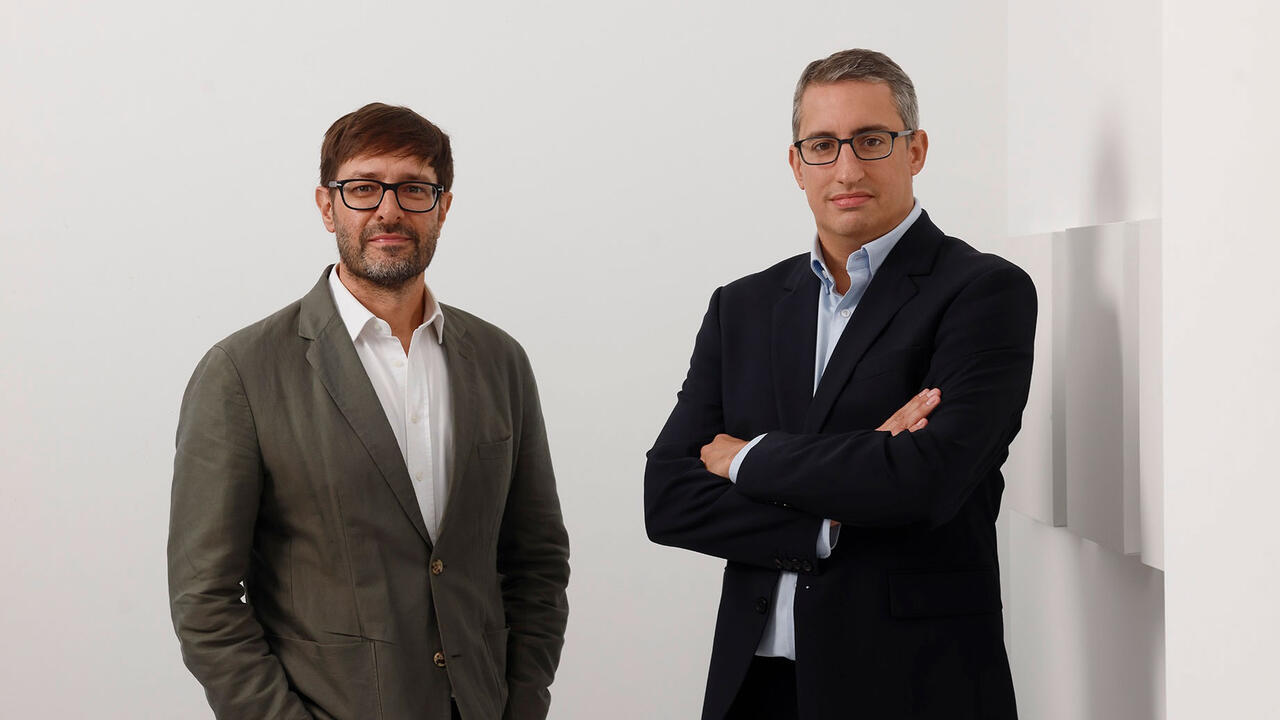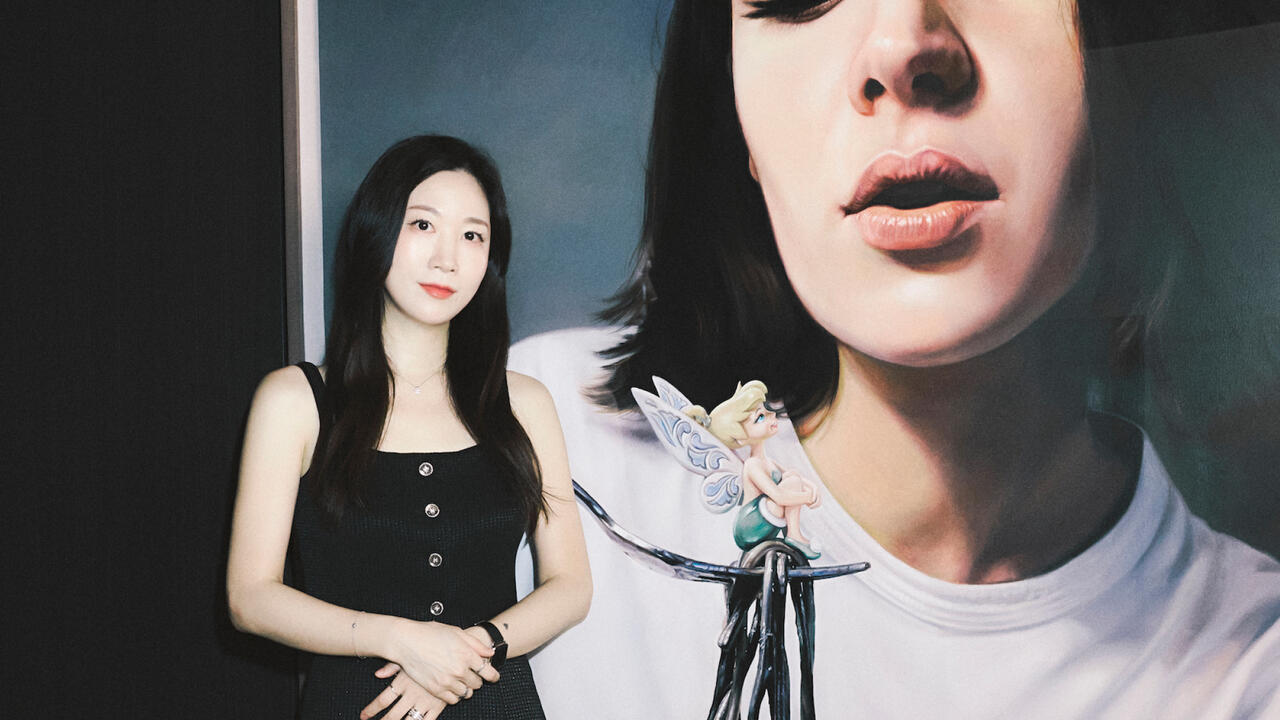Why Two Los Angeles Collectors Don’t Rank Their Visitors or Artworks
Janine Sherman Barrois and Lyndon Barrois explain how they put their art ‘where it feels right’
Janine Sherman Barrois and Lyndon Barrois explain how they put their art ‘where it feels right’

Essence Harden Janine, you’re from DC, and Lyndon, you’re from New Orleans, and I wanted to start by asking how your hometowns have influenced how and what you collect?
Janine Sherman Barrois I grew up in Massachusetts, then Virginia, right outside of DC, Chocolate City. My mom and dad always took us to museums. We had a very big old house and my mother used to buy big pieces of wood and paint abstracts on them. I just thought, 'This is what moms do.' I didn’t realize she was trying to fill this house up with art, because we couldn’t afford to buy it. When we were of age to go to museums, I was always looking for Black artists that were like my mother or trying to see my face in them. But at that time, even when you went to major museums in the country, African American artists were not embraced in the way they are now. There’s been an awakening in the last 15, 20 years.
For me, collecting was about filling our home with all different types of African American artists, or artists of the diaspora, and having family and friends come and see themselves and feel themselves in the house. We don’t collect based on whether someone is famous or not, we collect from our gut and our gut might have allowed us to buy a Kehinde Wiley early on in his career. It might have got us a Mark Bradford, but it also got us an artist who was selling their work on the street outside MOCA.

Lyndon Barrois Well for me, it just started growing up. Like most kids, I always drew, but then I just never stopped, and I went into art. I went to Xavier University (of Louisiana). I did an undergrad there and studied under John Scott. He was the most important teacher I had. John was exceptional as an artist and in the way he taught. He’d say, 'I’m going to teach you guys everything I know, everything I’ve ever learned, because I want you guys to be the best you can be. But when you graduate from here, just know you’re my competition.' When you hear that, you could either be intimidated by it or you could grow from it. He made me see that my miniatures were art forms because they were sculptures and I didn’t realize how much of what I was learning from him, I was putting into them. He was also the first MacArthur Grant winner that I knew. I started to see all the possibilities in art and all the artists creating things. John would teach us, not just European stuff, but about a lot of his friends — people like Martin Puryear, Sam Gilliam and Elizabeth Catlett — and they would come to Xavier.
Seeing all these people’s work, you just think: at some point in my life, it would be cool to collect it. Then when I came to CalArts, I wasn’t even in that mindset. Years later when we started dating, Janine would come to the house that I was renting in Whittier and say, 'You’re not an artist. Where’s the art on the wall?'
One thing I had was this cool-ass poster that’s in my studio now. When I had posters printed in New Orleans for the Boston Marathon and New Orleans Jazz Fest, the publisher gave me a Piet Mondrian silk screen from Pace Gallery in 1970. I didn’t think about its value — I just appreciated having it because it was cool.

JSB What about New Orleans?
LB Growing up there, there’s Mardi Gras, jazz fests, music and food everywhere. There is always something artistic happening. There’s so much artwork around, there’s NOMA (New Orleans Museum of Art) and CAC (Contemporary Arts Center) and posters being published. Then I worked at YAYA (Young Aspirations, Young Artists, Inc.) before going to CalArts.
One of the coolest things happened when I was in 10th grade. It was winter 1980, and in my English workbook on every page I drew a different sport from the Winter Olympics. Turning the book in, I’m thinking, 'Oh, shit, man. Father Perry’s going to see what I’ve been doing and that I’ve not been doing the work.' But when he gave me the book back, he wrote in it, 'B- for the work, A+ for the artwork.' I will never forget it. That was typical for New Orleans.
JSB I had the same thing in DC going to Howard. It was the first time I had real proximity to art on a daily basis. Like a lot of HBCUs, Howard has a major collection and when you’d go to the library, for example, there would be great artists all around you, from Charles White to Romare Bearden.

EH There are more formal ways of hanging things that are very Western and European, but the way that Black collectors hang their houses has this lush and abundant quality. It’s not stark, there’s not a blank white wall as if it’s a gallery, with a single work. It’s actually a conversation between artists, whether emerging or established, different materials and textures. In all of your spaces I saw that over and over again. I’m interested in the choices to put particular artists in relation to each other. You’re getting new work all the time and changing things out, making new conversations happen. When I hang something, as a curator, I have a conversation in mind. Thinking about your work by Greg Breda, I asked myself who was below him, because that’s a very direct relationship you’re creating.
JSB Jackie Nickerson.
EH Right. That’s just one of the many instances in your home. What’s the narrative that you’re interested in creating between the artists?
LB When we have the opportunity to actually live with work, it’s not really a conscious thing of 'this needs to go here and this needs to go there'. It’s just a case of, put it where it feels right.
JSB We like to have a house that’s engaging and open to everyone in all walks of life. I think that’s why a lot of people enjoy coming here. We didn’t want the pretension and preciousness of 'this is a Mark Bradford and here is a blank white wall. He will hang by himself; he is one of the greatest of our time. Please come and look at our Mercedes and then our Mark Bradford.' Instead we wanted the vibe that this is a house in a historically Black neighborhood where art was bought at auction, on Instagram, at a student fair, at Frieze. Or it was bought at a great gallery, but also from an emerging one on Washington Blvd. Just like the people that we love coming to our home — we don’t value anyone because of what they do, who they are, what they have.
LB We don’t rank our visitors.
JSB We don’t rank them, and we don’t rank the artworks. I hope that all of the artists in the collection get whatever they want. If they want to be catapulted and become renowned like Betye Saar, Amy Sherald or Kara Walker, I hope that happens for them. We don’t collect for that reason.
LB If they don’t, we’re still going to hang their work.
JSB We want the works to speak to each other, but even more so to speak to the people that engage with them when they come into the house.

LB We have a piece you didn’t see, in the dining room. It’s not hanging because it’s very heavy and I’m afraid it might fall. It’s 12 panes of glass with a portrait of Muhammad Ali by an artist named Henry O’ Henry, done in 1975.
JSB We got it at the Baldwin Hills Crenshaw Mall in Leimert Park. There was a little show in the middle of the mall. People have come here from Tate, LACMA, MOCA or wherever, and they look at that piece and see the artistry behind it.
What actually makes someone the greatest? Is it that a curator has said it, is it that they’ve been tapped by someone in New York or a big institution? What is it and does it matter? To us does it matter? It’s just like understanding some people will get an Oscar. We get that, but we try not to have a hierarchy at all. And in the end if you come here we’re actually not interested in whether you like it or not.
EH It’s your house. You like it. That’s why it’s here.
JSB It’s our house. We like it. We’re happy that we’re having a conversation because clearly it’s doing its job. It’s making you feel something.
EH How does your collection have a relationship with people working intuitively as artists? Specifically around artists choosing materials that are more unwieldy compared to acrylic and oil, and those working in abstraction.
JSB We do collect a lot of figurative work. As we have expanded, we have got into abstract. There is such a tendency to want to see yourself, but part of seeing yourself can also be seeing yourself in abstraction. We recently commissioned a phenomenal Shinique Smith and acquired an amazing Reginald Sylvester II and are looking at other great abstract artists. Their intuition is creating what they want and not necessarily doing what the markets want.

EH It feels like you’re growing and stretching — looking for other genres and media.
JSB Video work is important to us because we know that it has been important for Black artists.
EH You are both artists in different fields yourselves and I’m interested in how that influences you. You know the impact of what it means to be a working artist. How do your jobs link to what you collect? And how do the two maybe weave in and out of each other?
LB A lot of it, I guess, on a personal level is just the inspiration we get. I love waking up under those butterflies. I just love seeing how different artists approach and execute their work. It inspires me and I get ideas about how I’m going to execute my own work, whether it’s my miniatures or my feature film VFX work.
JSB As a creative and a show runner, it was important to me for The Kings of Napa (2022–ongoing) to make sure that we put art in there so that people see how African Americans live and feel. Also I know, as an artist, as a writer, how hard it is to get things on the air that deal with Black subjects. That correlates to how hard it is for a Black writer, a Black painter, a Black sculptor or a Black collagist. I know because we’ve traveled around the world, we’ve gone to the Louvre and all the major museums, and we know who’s being collected. Knowing the struggle and the importance of having our history represented globally has compelled both of us to be active on boards. Lyndon is on the board of the National Portrait Gallery in DC and in the last year, I joined the Hammer Advisory Board. We want to advocate, help fundraise, help acquire these artists because we want, in 50 or 100 years time, when people go to institutions around the world, for us to be celebrated. The only way that happens is through advocacy. That’s why we will fund a show or help fund a show.
LB Not only that, it’s also important to let Black people who aspire to be artists know that it’s possible. So often, people don’t have the opportunity or privilege to take the necessary risks, and instead are discouraged from doing it. When people see us and successful artists, it helps to promote that notion that you can do this too. We’re nothing exceptional or special. We made the sacrifices, we put in the time and work, we got into debt to achieve this. It’s doable.

JSB We’re also embracing the idea of passion being a way to make a living. In the past you became a lawyer, a doctor, an accountant. But I think now people are saying to children, you have to follow your passion. You need to have the encouragement of your community, your parents, your friends to make it happen.
LB Art is such a big umbrella. Everything, no matter what, started on a drawing board. From shoelaces up to the comb you use on your hair. You can choose to go into product design, advertising, layout design or animation, as I did. It’s all art and there are so many ways to make a living at it.
EH I think for Black collectors it’s very much about kinship and friendship and forging paths and roads together to bring everyone up at the same time. What does this idea of belonging to a larger friendship web mean to you?
JSB It’s great. It’s been years of forging these relationships and it’s an amazing feeling to be around people at dinner and talk about art. You can discuss what you’ve seen. You can travel to another country and talk about art. I think that commonality has unified a group of people in a way that will result in lifelong friendships. And to talk about not only acquiring work, but celebrating artists and seeing how we can get them into institutions.
LB We as Black people have been doing the work in every aspect of life for so long and we’ve just been left out of the conversation. I always like to say the world is just catching up.
This article first appeared in Frieze Week, February 2023 under the headline 'It's Our House'
Main image: Lyndon Barrois and Janine Sherman Barrois in their home in Los Angeles, November 2022. On wall: Reginald Sylvester II, These Songs of Freedom II, 2020. Right, just visible: MissMe,The Sisters IV, 2022. Photograph: Chantal Anderson






















